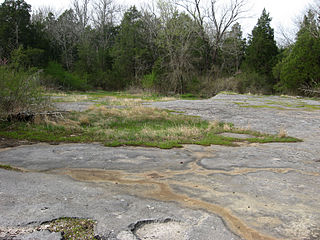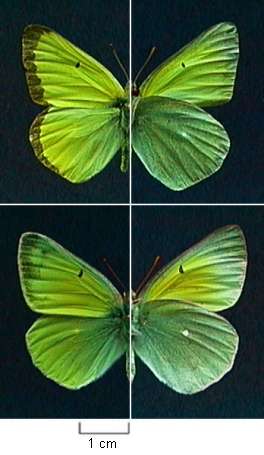
There are at least 174 members of the pea family, Fabaceae, found in Montana. [1] Some of these species are exotics (not native to Montana) [2] and some species have been designated as Species of Concern. [3]
Contents



- Amorpha canescens , lead plant
- Astragalus adsurgens , rattle milkvetch
- Astragalus agrestis , meadow milkvetch
- Astragalus alpinus , alpine milkvetch
- Astragalus americanus , American milkvetch
- Astragalus aretioides , sweetwater milkvetch
- Astragalus argophyllus , silver-leaved milkvetch
- Astragalus atropubescens , Kelsey's milkvetch
- Astragalus australis , Indian milkvetch
- Astragalus barrii , Barr's milkvetch
- Astragalus bisulcatus , two-grooved milkvetch
- Astragalus bourgovii , Bourgeau's milkvetch
- Astragalus canadensis , Canadian milkvetch
- Astragalus canadensis , Morton's Canadian milkvetch
- Astragalus canadensis , shorttooth Canadian milkvetch
- Astragalus ceramicus , painted milkvetch
- Astragalus ceramicus , pottery milkvetch
- Astragalus chamaeleuce , ground milkvetch
- Astragalus cibarius , browse milkvetch
- Astragalus cicer , chickpea milkvetch
- Astragalus convallarius , lesser rushy milkvetch
- Astragalus crassicarpus , groundplum milkvetch
- Astragalus drummondii , Drummond's milkvetch
- Astragalus eucosmus , pretty milkvetch
- Astragalus falcatus , Russian milkvetch
- Astragalus flexuosus , flexible milkvetch
- Astragalus geyeri , Geyer's milkvetch
- Astragalus gilviflorus , threeleaf milkvetch
- Astragalus gracilis , slender milkvetch
- Astragalus grayi , Gray's milkvetch
- Astragalus hyalinus , summer milkvetch
- Astragalus inflexus , bent milkvetch
- Astragalus kentrophyta , mat milkvetch
- Astragalus kentrophyta , spiny milkvetch
- Astragalus kentrophyta , spiny milkvetch
- Astragalus lackschewitzii , Lackschewitz' milkvetch
- Astragalus lentiginosus , freckled milkvetch
- Astragalus lentiginosus , sodaville milkvetch
- Astragalus leptaleus , park milkvetch
- Astragalus lotiflorus , low milkvetch
- Astragalus microcystis , least bladdery milkvetch
- Astragalus miser , Yellowstone milkvetch
- Astragalus miser , prostrate milkvetch
- Astragalus miser , timber milkvetch
- Astragalus miser , woody milkvetch
- Astragalus missouriensis , Missouri milkvetch
- Astragalus oreganus , wind river milkvetch
- Astragalus pectinatus , narrowleaf milkvetch
- Astragalus plattensis , Platte River milkvetch
- Astragalus platytropis , broad-keeled milkvetch
- Astragalus purshii , Pursh's milkvetch
- Astragalus purshii , woollypod milkvetch
- Astragalus racemosus , raceme milkvetch
- Astragalus robbinsii , Robbins' milkvetch
- Astragalus scaphoides , bitterroot milkvetch
- Astragalus shortianus , Short's milkvetch
- Astragalus spatulatus , tufted milkvetch
- Astragalus tenellus , loose-flower milkvetch
- Astragalus terminalis , railhead milkvetch
- Astragalus vexilliflexus , bent-flowered milkvetch
- Caragana arborescens , siberian peashrub
- Coronilla varia , common crown-vetch
- Cytisus scoparius , Scotch broom
- Dalea candida , white prairie clover
- Dalea enneandra , nine-anther prairie clover
- Dalea purpurea , purple prairie clover
- Dalea villosa , silky prairie clover
- Glycyrrhiza lepidota , wild licorice
- Hedysarum alpinum , apline sweet-vetch
- Hedysarum boreale , boreal sweet-vetch
- Hedysarum occidentale , western sweet-vetch
- Hedysarum sulphurescens , yellow sweet-vetch
- Lathyrus bijugatus , latah tule pea
- Lathyrus latifolius , broad-leaf peavine
- Lathyrus ochroleucus , pale vetchling peavine
- Lathyrus sylvestris , flat pea
- Lathyrus tuberosus , earth-nut peavine
- Lotus corniculatus , garden bird's-foot-trefoil
- Lotus tenuis , slender trefoil
- Lotus unifoliolatus , American bird's-foot trefoil
- Lupinus arbustus , long-spur lupine
- Lupinus argenteus , depressed lupine
- Lupinus argenteus , lodgepole lupine
- Lupinus argenteus , silvery lupine
- Lupinus caespitosus , stemless-dwarf lupine
- Lupinus caudatus , Kellogg's spurred lupine
- Lupinus leucophyllus , woolly-leaf lupine
- Lupinus polyphyllus , Burke's lupine
- Lupinus polyphyllus , Wyeth's lupine
- Lupinus polyphyllus , bigleaf lupine
- Lupinus pusillus , small lupine
- Lupinus sericeus , Pursh's silky lupine
- Medicago falcata , yellow alfalfa
- Medicago lupulina , black medic
- Medicago polymorpha , toothed medic
- Medicago sativa , alfalfa
- Melilotus albus , white sweetclover
- Melilotus officinalis , yellow sweetclover
- Onobrychis viciifolia , common sainfoin
- Oxytropis besseyi , Bessey's locoweed
- Oxytropis besseyi , Montana locoweed
- Oxytropis borealis , boreal locoweed
- Oxytropis campestris , Columbia locoweed
- Oxytropis campestris , Cusick's locoweed
- Oxytropis campestris , field locoweed
- Oxytropis campestris , yellow-flower locoweed
- Oxytropis deflexa , blue nodding locoweed
- Oxytropis deflexa , nodding locoweed
- Oxytropis lagopus , hare's-foot locoweed
- Oxytropis lambertii , purple locoweed
- Oxytropis parryi , Parry's locoweed
- Oxytropis podocarpa , stalked-pod locoweed
- Oxytropis riparia , Ruby Valley locoweed
- Oxytropis sericea , white locoweed
- Oxytropis splendens , showy locoweed
- Pediomelum argophyllum , silvery scurfpea
- Pediomelum cuspidatum , large-bracted scurf-pea
- Pediomelum esculentum , pomme-de-prairie
- Pediomelum hypogaeum , little Indian breadroot
- Psoralidium lanceolatum , lance-leaf scurfpea
- Psoralidium tenuiflorum , few-flowered scurfpea
- Robinia pseudoacacia , black locust
- Sphaerophysa salsula , bladder-vetch
- Thermopsis montana , mountain goldenbanner
- Thermopsis montana , slender goldenbanner
- Thermopsis rhombifolia , roundleaf thermopsis
- Trifolium arvense , rabbit-foot clover
- Trifolium aureum , yellow clover
- Trifolium beckwithii , Beckwith's clover
- Trifolium campestre , low hop clover
- Trifolium cyathiferum , cup clover
- Trifolium dasyphyllum , whip-root clover
- Trifolium dubium , suckling clover
- Trifolium eriocephalum , woolly-head clover
- Trifolium fragiferum , strawberry-head clover
- Trifolium gymnocarpon , hollyleaf clover
- Trifolium haydenii , Hayden clover
- Trifolium hybridum , alsike clover
- Trifolium latifolium , twin clover
- Trifolium longipes , long-stalk clover
- Trifolium microcephalum , woolly clover
- Trifolium nanum , dwarf clover
- Trifolium parryi , Parry's clover
- Trifolium pratense , red clover
- Trifolium repens , white clover
- Trifolium variegatum , white-tip clover
- Trifolium wormskioldii , Wormskjold's clover
- Vicia americana , American purple vetch
- Vicia americana , American vetch
- Vicia americana , mat vetch
- Vicia cracca , tufted vetch
- Vicia sativa , spring vetch
- Vicia tetrasperma , lentil vetch
- Vicia villosa , winter vetch










